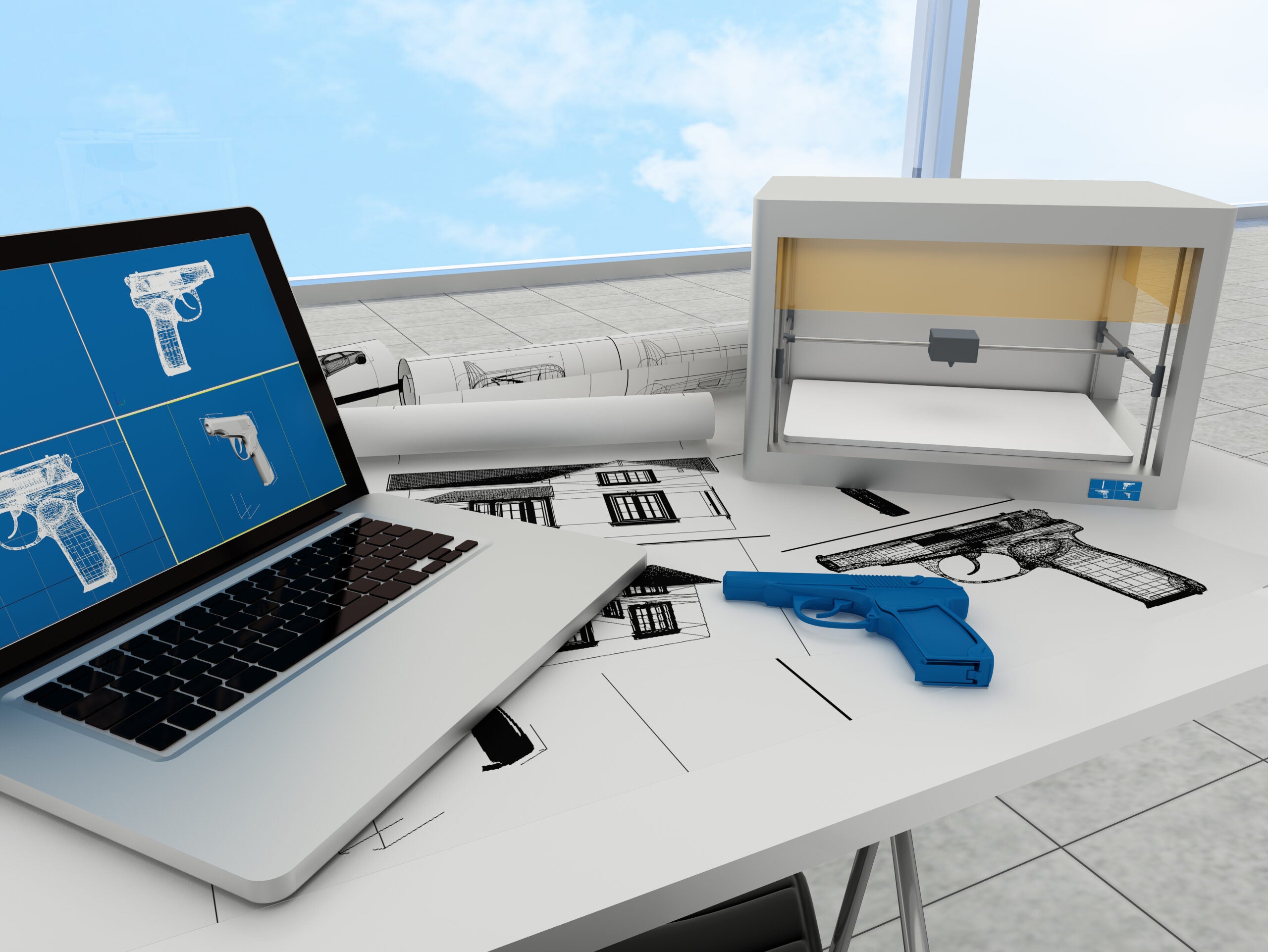
3D printers enable users to create everything from affordable bionic arms for children to houses. However, experts warn that 3D printing could help criminals produce lethal guns, capable of carrying multiple rounds of ammunition.
Those fears have come to the fore after the Metropolitan Police’s Specialist Crime Command found “a suspected makeshift 3D firearms factory” at a North London home in October. The police believed it to be one of the biggest seizures of 3D printed firearms in the UK ever.
“This operation demonstrates how we continue to relentlessly target those who attempt to put lethal firearms on the streets of London,” said Paul Brogden, commander at the Met.
This is not the first time 3D printed weapons have been a hot topic in the UK. This summer, detective chief superintendent Nick Blackburn told Sky News that the Met is “being trained to look out for guns that do not look like conventional firearms.”
How are 3D printed weapons produced?
3D printed weapons are becoming more common on our streets, but how exactly are they produced?
“[Unlike] a traditional gun, which has multiple parts, a 3D printed gun is printed as one solid object,” Carolina Pinto, analyst at research firm GlobalData, tells Verdict. “It’s most often made through extrusion-based technology. This is where the plastic is forced through a nozzle and [printed].”
How well do you really know your competitors?
Access the most comprehensive Company Profiles on the market, powered by GlobalData. Save hours of research. Gain competitive edge.

Thank you!
Your download email will arrive shortly
Not ready to buy yet? Download a free sample
We are confident about the unique quality of our Company Profiles. However, we want you to make the most beneficial decision for your business, so we offer a free sample that you can download by submitting the below form
By GlobalDataPinto says 3D printed guns still need manufactured ammunition, pins, spirals and barrels because they need to be metal. 3D printers that use plastic are cheaper for consumer than ones using metal.
The National Crime Agency told the BBC how 3D printed guns are “credible and viable” compared to earlier versions, which were often single-shot weapons.
However, the agency also said 3D printing could only make between 80% to 90% needed for guns. The guns still need traditionally manufactured barrels and ammunition.
Are the weapons getting even more dangerous?
Experts fear the spread of 3D printed weapons and the potentially lethal threat to the public they represent across the globe – not just in the UK.
In October, Australian police seized around 80 illegal 3D printed firearms in Victoria. This included some homemade “military-style weapons”, and 3D printers, according to 9News.
In the same month, US senator Edward J. Markey co-led a call to President Biden to roll back the deregulation of gun rules initiated by Donald Trump. The rule weakened export controls, which were designed to prevent 3D printed firearm computer files from being posted on the internet.
“President Biden can undo the Trump-era rule that has made the instructions for the 3D-printing of untraceable and deadly ‘ghost’ guns widely available online,” Markey said in a blog post. “The online distribution of these ghost gun blueprints only increases the risk of these weapons proliferating and poses a serious threat to public safety and national security.”
One such file for the 3D printed gun nicknamed the Liberator was released in 2013 and has been downloaded more than 100,000 times worldwide.
How can the 3D printed gun threat be stopped?
Experts say action is needed to stop the threat of 3D printed weapons in its track.
“Without, action, regulation, legislation, and vigilance being taken [against 3D printed weapons], the threat will continue to grow,” David Bicknell, princpial analyst at GlobalData, tells Verdict.
Countries like Australia, the US and China have responded to the growing threat in a number of ways. They have moved to criminalise 3D printed firearms’ manufacture, licence or registrations schemes where guns are legal as well as introducing new possession offences for digital design files to make the so-called ghost guns.
Pinto says that two biggest issues for 3D printed weapons in the future are traceability and detectability.
“In terms of traceability, you can 3D print a gun, which will then have no serial numbers, no registration,” Pinto says. “But then you also have the issue of the detectability. If the 3D printed guns are taken apart [from its plastic and metal components], they’re technically undetectable.”



